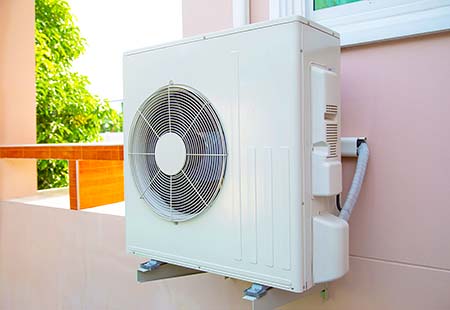
Air heat pumps have become increasingly popular in recent years as a means of heating and cooling homes and buildings. They are an energy-efficient and environmentally friendly alternative to traditional cooling systems. How do air source heat pumps work, and how can we learn important things about their features and functionality? They use the temperature of the surrounding air to produce warmness using an incredibly straightforward mechanism. These systems consist of three primary components: an outdoor unit, an indoor unit, and a refrigerant loop.
Once the warmth is transferred, the refrigerant returns to its liquid state and flows back to the outdoor unit to repeat the cycle. They are versatile for year-round use, which is one noteworthy feature. They can give both capabilities. Air-origin warmth relies on the inherent warmth in the air to function. They become an affordable and environmentally responsible heating option for houses and structures.
How Do Air Source Heat Pumps Work of Principle?
When the heated air is in the heating mode, warmness is taken up by the outdoor unit from the surrounding air. There is thermal energy in the air even in cold weather; it’s just at a lower temperature than indoors. The refrigerant flowing through the exterior coil of the hotness drain absorbs the hot power from the outside air. Once the refrigerant absorbs v0lumes from the outdoor air, it becomes a low-pressure, low-volume gas. The compressor, located in the outdoor unit then compresses this gas, raising its thermal reading and pressure. Compression increases the energy content of the cooler, making it capable of releasing warmth at a higher temperature.
The indoor unit receives the hot, high-pressure coolant, which travels via the evaporator coil. In the meantime, air from the interior travels over the evaporator coil and is drawn in by the indoor fan. As the hot refrigerant flows through the coil, it releases warmness into the indoor air, raising its temperature. As the warm air fills the indoor space, it provides comfort, even during cold weather conditions.
After being heated indoors, the cooling becomes a low-pressure, low-temperature liquid. After that, it flows back through a capillary tube or expansion valve to the exterior unit. This device reduces the pressure of cooling causing it to expand and cool down in preparation for the next cycle. Returning to the exterior coil, the cooled refrigerant generates additional heating from the surrounding air. This continuous process allows the air-origin warmness to maintain a comfortable indoor temperature efficiently.
How Do Air Source Heat Pumps Work and How Benefits Achieve?
Versatility
they can warm and cool indoor spaces, offering year-round comfort with a single system. They can reverse the refrigeration cycle to extract warmness from the indoor air and expel it outside during warmer months, effectively providing air conditioning.
Environmentally Friendly
Utilizing the ambient air’s renewable energy, airhead warmth pumps lessen the need for fossil fuels. It fuels and reduces greenhouse gas emissions from air conditioning. They contribute to mitigating climate change and promoting sustainable energy.

Cost Savings
Even so, it could cost more to install initially than traditional techniques. Over time, the potential for long-term energy savings and financial rewards like tax credits and government rebates may make them an affordable investment. Additionally, their durability and low maintenance requirements can further reduce operating costs.
Zonal Heating and Cooling
it can provide zonal, allowing for precise temperature control in different areas. This capability enhances comfort cooling only the occupied spaces, rather than the entire building.
Considerations And Limitations
When the outside air temperature drops below freezing, it could become less effective in cold areas. It can become less effective when the outside air temperature drops below freezing in really cold climates. The warmness system could need extra heating or defrosting systems to continue operating under such circumstances. The outdoor unit contains a compressor and fan, which can generate noise during operation. Proper placement and installation can help minimize noise disturbances, but it’s essential to consider potential noise issues, especially in residential areas.
Correct sizing and proper installation are crucial for maximizing the efficiency and performance of an air warmth system. A large system can regularly cycle on and off, wasting fuel and decreasing comfort. On the other hand, a too-small system can trouble providing enough heat or cooling for the room. While air source pumps generally have lower maintenance needs compared to combustion-based systems. Regular inspection, cleaning, and servicing are necessary for optimal performance and longevity. This includes maintaining refrigerant levels, changing air filters, and looking for debris accumulation in exterior coils.
The initial cost of purchasing and installing an air source warmness system can be higher than that of traditional both systems. However, as mentioned earlier, long-term energy savings and potential incentives can help offset this initial investment. Electricity is required to run the compressors, fans, and other parts of the air source heat pumps. They consume less energy than resistive heating systems, although their operation does. It might be an issue in places with limited access to renewable fuel sources or high electricity prices.
Conclusion
It offers an efficient, versatile, and environmentally friendly solution for heating and cooling homes and buildings. They can deliver cozy interior temperatures and emit fewer greenhouse gases by utilizing renewable energy from the surrounding air. Understanding considerations of air sources is essential for making informed decisions about their adoption in commercial spaces.
